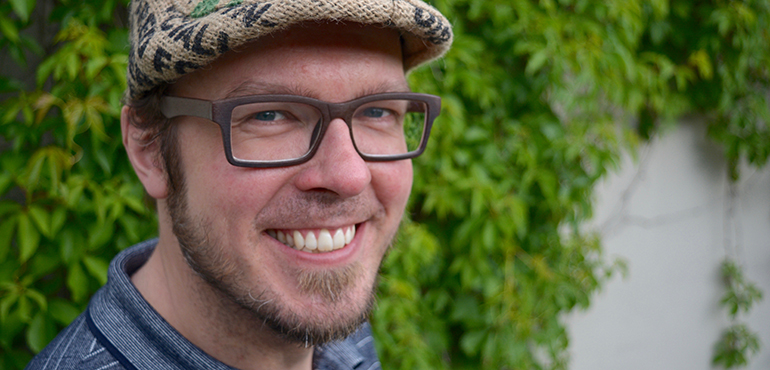
Shared
rules of journalism are important
Media
criticism seems to be the latest fad, says Mikko Hautakangas, researcher of
media culture in Tampere University. Trust in media has not been lost, however,
even if language and operators have changed.
Crisis in media is usually linked to
digitalisation and major changes in the earnings models of traditional
journalism. Media crisis has become a trendy expression that has been debated
in the media field for years now. But Mikko
Hautakangas, researcher of media culture in Tampere University, thinks that
we should define what we are talking about when we talk about media crisis.
“Is
it about the financial crisis resulting from the previous strong operators not
finding the same cash flow any more, or is it about journalism as a social
operator being in crisis? From a researcher’s point of view, these two a linked
but they can be studied from difference perspectives.”
According
to Hautakangas, the latter is strongly associated with the credibility and reliability
of journalism and people’s changing needs. There has recently been a lot of
debate about disinformation and the consumers’ wish to gain correct and
up-to-date information.
“New
style of language has emerged that is questioning the role of journalism. In
Finland, trust in media is still rather strong, but we now have loud
challengers such as alternative media that have shown their social power,”
Hautakangas says.
Alternative
media are media that publish information not in line with established types of
media. Some of their news are incorrect and biased or completely untrue. Examples
of these are MV-lehti, Magneettimedia and Verkkomedia.
Shared
rules of journalism are important
The language in alternative media has set out
to challenge journalism and communication that previously were considered
almost sacred, says Hautakangas.
“Alternative
media loudly argue that mainstream media is hiding something and seek to offer
their politically charged truths instead. Indeed, the message of MV-lehti is
that it tells you the truth when everyone else hides it.”
Hautakangas
thinks that alternative media should be taken seriously but not be given too
much importance. Strong minor groups rather mess up the debate than win over
large crowds. What is important is that we still have faith in the shared rules
of journalism.
“The
worst thing that journalism could now do to undermine its credibility would be
to start using similar language. If we know, for example, that anti-refugee
articles in the style of MV-lehti attract readers, we must not succumb to
similar language and clickbait headlines.”
Clickbait
journalism is the new yellow journalism
Clickbait journalism has become a culturally
recognised symbol of yellow press, says Hautakangas.
“Just
10 or 15 years ago we frowned on eye-catching headlines for distorting facts
and highlighting wrong topics. If we now ask a person on the street about the
current state of media, they will blame clickbait headlines, not yellow press.”
The
heyday of clickbait journalism seems to be over, however, partly because it has
been criticised so strongly, says Hautakangas. It is also possible for media to
gain positive attention by mending their ways, and many have done that. Communities
such as Klikinsäästäjä (Clicksaver)
on Facebook have made criticism visible, and media consumers are also more
critical than before.
It’s
good to be critical
Media crisis is strongly linked to the public’s
participation in the media environment. In his dissertation, Hautakangas
discusses the interaction between the production and participants in the Big
Brother format: who really has the power? Introduced in Finland in 2005, Big
Brother was one of the first formats to exploit audience participation and
address it. This is also linked to today’s practices, such as having a parallel
discussion on Twitter or Facebook while watching a TV programme. While
watching, you see the analyses by other viewers of the topic in question.
“Debate
on reality television brought up the question whether people in these programmes
are real and how much they have been scripted. But these same questions we
should always ask about documentary films, news or current affairs programmes
as well. How the topic is constructed, who’s talking, who they are speaking
for.”
Traditional
journalism still has a foothold in our digitalised society, says Hautakangas.
“Saying that consumers’ trust has been lost is an exaggeration. People still want to gain information from journalists who know what they are doing. We have prominent journalists who are significant even in national politics. Finding out the facts and making them public is traditional journalism and still valuable.”
Iltalehti
made it to the headlines
Finnish
afternoon papers have been blamed for misleading headlines and clickbait journalism.
One of them, Iltalehti decided to take the bait and started to reform its
headlining last September with a readers’ jury and internal feedback. They also
got help from the Klikinsäästäjä
community on Facebook.
According
to publishing manager Erkki Meriluoto, the headlines have improved
substantially. Instead of mysteries and euphemisms, the actual gist is in the
headline.
“We
also get feedback without inviting it, which is great. Readers have been very
happy with the new approach. But we also get feedback when there is room for
improvement in the headlines – after all, we have discussed this topic
publicly. Our readers want to participate in the reform,” Meriluoto says.
Is
clickbait journalism then past and gone in Iltalehti?
“Whatever clickbait journalism means. Of course every journalist wishes that their article will be clicked, but our aim is not to get those clicks by misleading the reader. I believe that a strategy to create a loyal and satisfied readership is far better than trying to make a fast buck.”
Published: 12 January 2016
Theme: brainprint
Text by: Pia-Marie Rauhala and Diana Törnroos